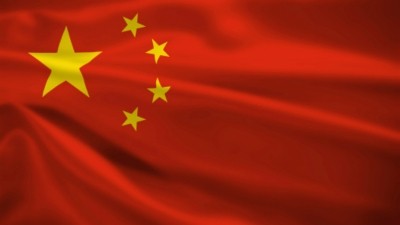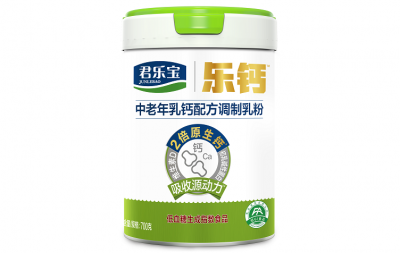China review: The Top 10 most-read China food and beverage stories from 2022

COVID-19 contamination: Frozen food can carry virus, claims Chinese public health authority study
Frozen food from meat- and poultry-processing plants or markets can be contaminated with the COVID-19 virus, according to findings from the Chinese Center for Disease Control and Prevention (CCDC).
The scientists collected and analysed over 55 million swabs of imported and domestic cold-chain foods and their outer or inner packaging during slaughter, production and processing, storage, transportation, and retail between July 2020 and July 2021.
A total of 1,455 samples (0.26 per 10,000) tested positive for the SARS-CoV-2 nucleic acid. For the virus-positive samples, 96.41% and 3.59% of samples were swabs of food and food packaging materials, and environment, respectively.
Out of the 1,398 COVID-19-positive food and food packaging material samples, 99.5% (1,391 swabs) were imported, and 0.50% (seven swabs) were domestic. Out of these positive samples, 18.6% (260 swabs), 2.65% (37 swabs) and 78.75% (1,101 swabs) were food, inner packaging, and outer packaging, respectively.
Plant-based 3D printing: China and Australia identified as key markets for new Wagyu launch
Hong Kong 3D food printing firm Alt Farm is eyeing China and Australia as its first key target markets for its plant-based A5 Wagyu Beef product.
Alt Farm is a spin-off from the Hong Kong University of Science and Technology (HKUST), and has developed a patented 3D food printing technology with a nozzle that enables it to print foods with specified textures.
This was hailed as a considerable difference from conventional 3D printed foods that are usually gelatinous before any additional processing.
China dairy growth: Rising consumer income and increased functional product innovation yields large leap
China’s dairy industry was seen to witness a large growth in per capita consumption in 2021, backed by rising consumer incomes and firms responding to current trends with the development of functional products.
According to data from the Dairy Association of China (DAC), 2021 saw the per capita consumption of milk in China rise to 14.4kg, a significant increase of 10.6% from the previous year.
Food security innovations revealed: How tech advances are helping China strengthen its supply chains
Artificial intelligence (AI) and robotics solutions to tackle the challenges plaguing the food supply chain in China have been unveiled as the nation strives to meet soaring demand and enhance nutritional quality.
China is the world’s largest importer of food and is only a net exporter in terms of rice.
Speaking at an online webinar, titled Smart Agriculture in China: Role of Digital Technology in Agriculture, experts said it was vital that state-of-the-art tech was utilised to boost China’s self-sufficiency by improving yields and food standards.
A number of new innovations highlighted included greenhouse control systems to increase cost-efficiency that resulted in higher crop yield and quality produce.
China labelling: Consumers want packaged foods to carry traffic light and warning labels for ‘negative’ nutrients
Chinese consumers have determined the traffic light labelling system as well as distinct warning labels highlighting ‘negative’ nutrients such as sugar, salt and saturated fat to be the most effective forms of front-of-pack labelling (FOPL), according to a study.
The study was jointly conducted by multiple health and nutrition organisations in China including the Chinese Academy of Medical Sciences and Chinese Nutrition Society, as well as several population health research bodies in Australia including the University of Wollogong and University of Sydney.
Participants were asked specific questions about FOPL was found to be the most attractive to them, which provided the information they needed the most to make purchase choices, and which enabled them to make healthier food choices the most quickly.
“When asked which FOPL format was seen as most attractive, the highest percentage (35.1%) of participants nominated MTL as their preference, followed by warning labels (21.9%),” said the study authors.
China COVID-19 updates: 'Low-risk’ food imports that test positive for virus allowed, but frozen items still in the cold
Later in 2022, China relaxed entry rules for ‘low risk’ food and beverage imports that ‘test positive’ for COVID-19, citing the virus’ short survival time on packaging surfaces, but did not relax this for frozen products given lingering concerns.
It seemed the government was finally moving to relax these import regulations for foods and beverages - possibly signalling its intent to get its international trade back on track.
“Recent research has shown that under normal temperature conditions, COVID-19 has a short survival time on the surface of most items and is completely inactivated within one day,” China’s State Council Comprehensive Team of COVID-19 Joint Prevention and Control Mechanism stated via a formal statement.
Fermented future - Plant-based yoghurt set for rapid China growth but regulatory hurdles persist - WATCH
China’s plant-based yoghurt sector is being predicted to enjoy significant growth, even though such products sit in a regulatory grey area, according to exclusive insights from our FNA InnovATE series.
The plant-based yoghurt sector has been recognised as one of the sectors seeing the fastest growth within the dairy alternative products market, with this being especially apparent in China where the category is tapping on the existing local US$17bn yoghurt market and US$433bn snacking market.
Plant-based yoghurt is very much positioned as a premium item prized for health benefits in China, and its meteoric rise here has also been attributed to the fact that some 80% of Chinese consumers have some form of lactose intolerance.
Show me the money: China’s New Protein sector hopeful to get its own Green Financing system
The alternative protein sector in China – more commonly known as New Protein locally – was greeted with the good news this year that it could finally get its own Green Financing system in line with China’s 2060 carbon neutrality goals, similar to existing financing systems in the energy and transportation sectors.
There was much hype in 2022 after Chinese President Xi Jinping made a specific mention of alternative protein in relation to food security and feeding the country’s population of 1.4 billion and growing.
For the New Protein sector, this signified major new opportunities opening up from development, marketing and funding perspectives.
‘Breaking the bottleneck’: Mengniu urges Chinese government to do more to boost dairy self-sufficiency amid consumption drive
Chinese dairy heavyweight Mengniu urged the government to focus efforts on boosting local dairy self-sufficiency alongside its efforts to increase consumption, highlighting that a dependence on dairy imports is not an effective food security strategy in the long term.
China’s Ministry of Agriculture and Rural Affairs' (MARA) ‘National Action Plan to Boost Dairy Competitiveness’ highlighted nine major areas within the dairy industry that will be receiving more focus over the next several years, and although the specific amount of investment and manpower that will flow to each area was not publicly disclosed, Mengniu urged the government to focus more resources to boost dairy self-sufficiency.
“Under the purview of the national strategy to revitalise the dairy industry, China’s milk production has reached 4.1% of the total global production and we have become the world’s fourth largest producer and second largest consumer of dairy,” Mengniu representative to China’s National People’s Congress Shi Yudong said at a high-level meeting.
Sensory safety: China tightens regulations for non-alcoholic beverages and dairy products
China implemented stricter food safety and quality regulations for non-alcoholic beverages and dairy products earlier this year, citing strict standards and requirements over areas such as sensory characteristics and ‘real’ product content.
This was announced by the National Health Commission (NHC) and State Administration for Market Regulation (SAMR) for two major food and beverage categories in the country – non-alcoholic beverages and dairy products.
For non-alcoholic beverages, the focus was mainly on food safety and adherence to sensory characteristics such as colour, taste, smell and overall condition of the product, as well as microbial content for fermented products containing bacterial strains.











